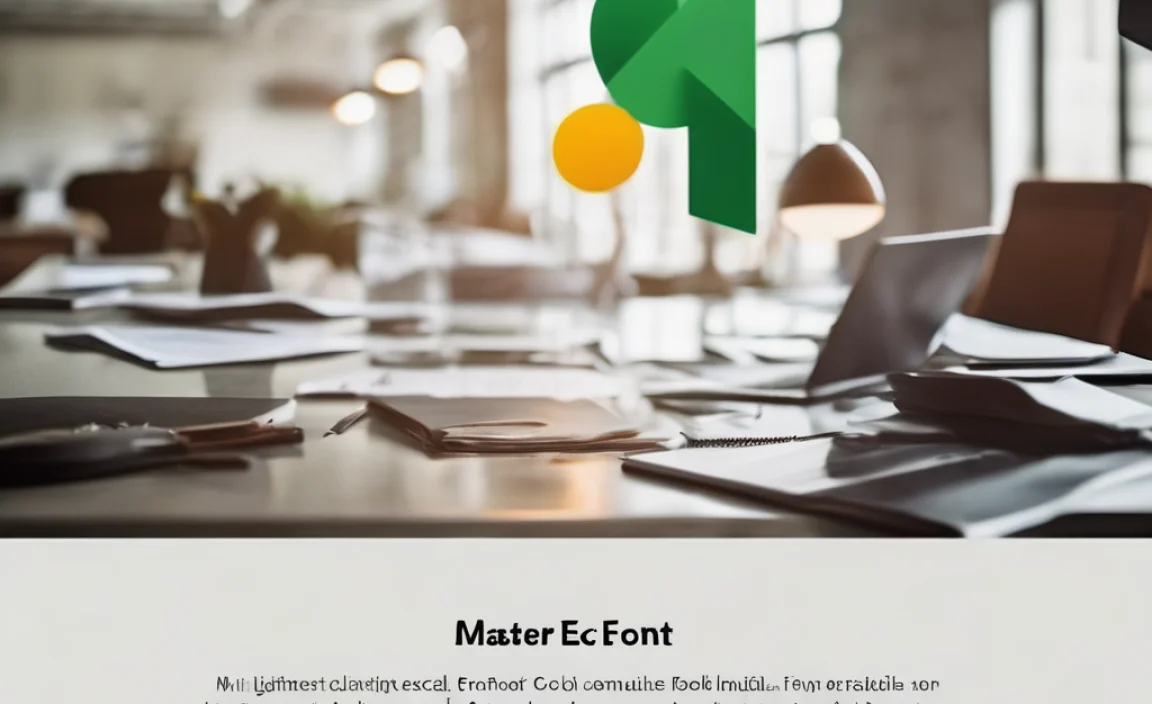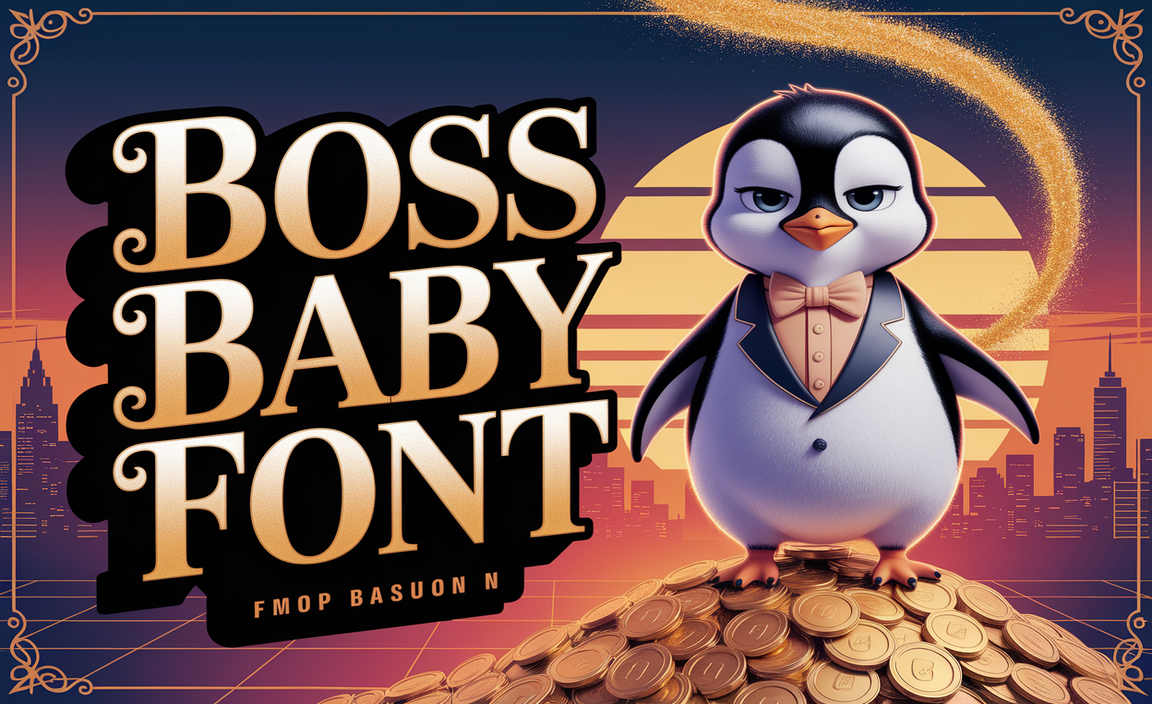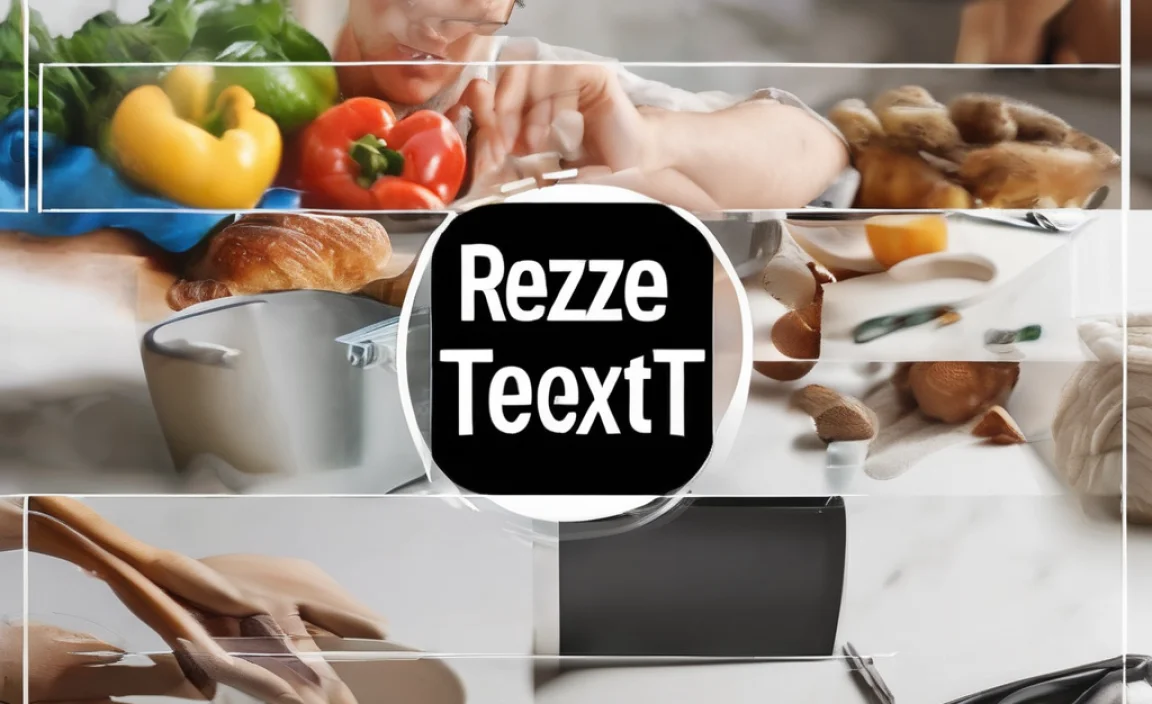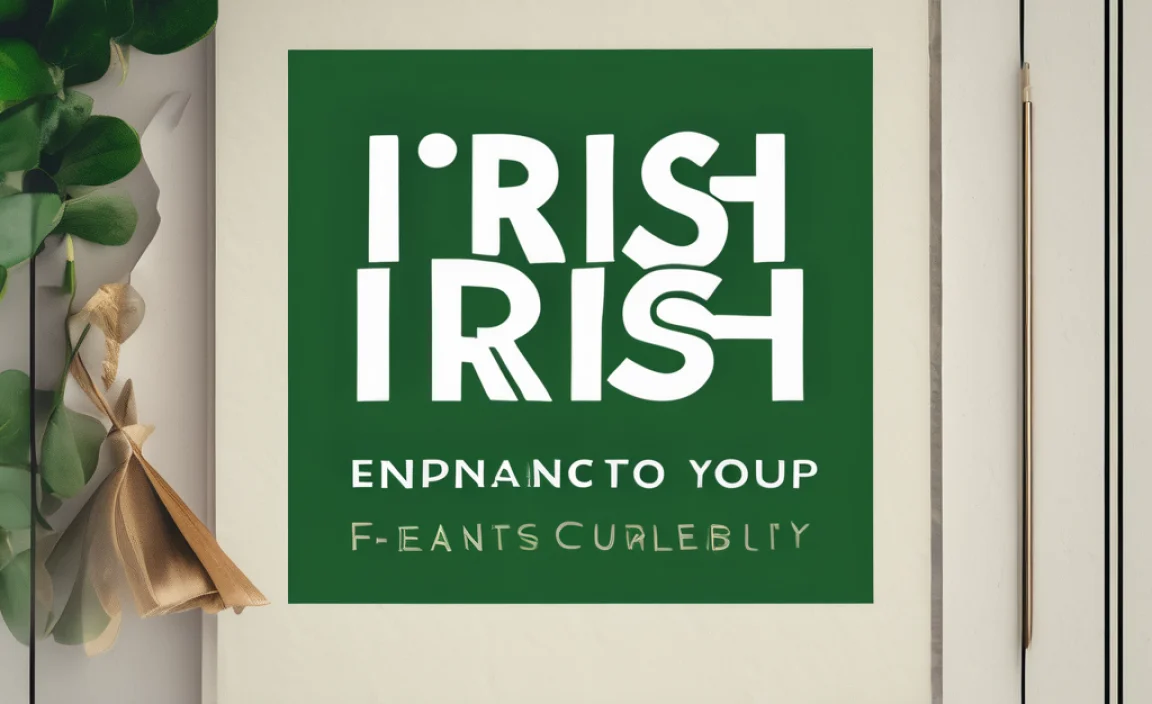Out of Step Font: Essential Styles – A Beginner’s Guide to Mastering Your Typography Choices
Quick Summary
The “Out of Step” font isn’t a specific typeface but a common design challenge: when your chosen fonts clash. This guide helps you identify discordant font styles and select harmonious pairings for clear, impactful design. Learn to balance serif, sans serif, display, and script fonts for professional results.
Have you ever looked at a design and thought something just felt… off? Maybe the words were hard to read, or the overall look didn’t quite click. Often, this feeling comes down to font choices. Picking the right typeface can seem tricky, especially when you’re starting out. But don’t worry! We’re here to make it simple. Think of this as your friendly guide to understanding how fonts work together, so your designs always feel balanced and look professional.
We’ll walk through the different font styles, explain why some work together and others don’t, and give you practical tips. By the end of this, you’ll feel confident choosing fonts that make your messages shine. Ready to get your typography in step?
Understanding the Core Font Styles & Why They Matter
Before we dive into making fonts play nicely, it’s helpful to know the main types. Think of them as different personalities in the world of letters. Each style has its own feel and purpose, and understanding these differences is the first step to avoiding a “font clash.”
Serif Fonts: The Classic Storytellers
Serif fonts have small decorative strokes, called serifs, at the ends of their main strokes. These little flourishes have been around for ages. They often give a feeling of tradition, reliability, and sophistication. Because the serifs help guide the eye along the line of text, they are generally excellent for long blocks of text, like in books or articles, where readability is key. Think of fonts like Times New Roman or Garamond – they’re designed for comfort during extended reading.
Sans Serif Fonts: The Modern Minimalists
Sans serif fonts, as the name suggests (“sans” means “without” in French), lack these serifs. They have clean, simple lines. This modern, minimalist aesthetic makes them incredibly versatile. Sans serifs often feel contemporary, friendly, and straightforward. They are fantastic for headlines, digital interfaces, and shorter blocks of text where a clean, airy feel is desired. Popular examples include Arial, Helvetica, and Open Sans. Their simplicity often translates to high readability on screens.
According to the Graphic Design Resources, “Sans-serif fonts are often favored for web design due to their clean appearance on digital screens, offering excellent legibility at various sizes.”
Display Fonts: The Character Actors
Display fonts are designed for impact. They are highly stylized and often have unique, eye-catching features. This makes them perfect for grabbing attention in headlines, logos, posters, or anywhere you need a strong visual statement. Because they can be so decorative, they are generally not suitable for body text where readability is paramount. Think of them as the bold graphics or illustrations of the typography world.
Script Fonts: The Elegant Emissaries
Script fonts mimic handwriting or calligraphy. They can evoke a range of emotions, from elegant and formal to casual and playful, depending on their specific style. Formal script fonts, with their flowing strokes and delicate flourishes, are great for invitations or special titles. More casual script fonts can add a personal, friendly touch. Like display fonts, they are best used sparingly for headings or short phrases, as long passages in script can be very difficult to read.
Why Fonts Can Be “Out of Step”
Now, let’s talk about that “out of step” feeling. It happens when fonts are chosen without considering their compatibility. Imagine two songs playing at once, each with a different tempo and melody – it sounds chaotic! The same can happen with fonts. Here are common reasons why fonts might not work well together:
- Too Similar: When two fonts are almost alike but not quite, it creates confusion. For example, two very similar sans serif fonts might make readers wonder if they are meant to be different, leading to a subtle but noticeable disharmony.
- Too Different: Conversely, fonts that are drastically different in style, weight, or personality can clash. A highly decorative display font paired with a very classic, understated serif font for body text can be jarring.
- Readability Issues: The most critical “out of step” moment is when a font choice makes text hard to read. This is especially true for body text. If a font is too decorative, too condensed, or has poor contrast, it’s automatically out of step with the goal of clear communication.
- Inconsistent Tone: Fonts carry a tone. A formal script font doesn’t typically pair well with a very casual, quirky sans serif if you’re aiming for a cohesive brand message.
Essential Font Styles for Harmonious Pairings
The secret to great font pairing isn’t about having a massive collection; it’s about understanding how a few key styles can complement each other. We’ll focus on creating harmonious duos or trios that work for most design needs.
The Classic Pairing: Serif + Sans Serif
This is the golden rule of typography, and for good reason! Pairing a serif font with a sans serif font is a time-tested method for creating contrast and hierarchy. The difference in their construction provides visual interest, clearly distinguishing headlines from body text.
How it works:
- Headline: Use a strong sans serif for impact and a modern feel, or a distinctive serif for elegance.
- Body Text: Use the opposite style. If your headline is sans serif, use a readable serif for your main content, or vice versa. The serifs in the body text help guide the reader’s eye, improving readability over long stretches.
Example:
- Headline: Open Sans (Sans Serif)
- Body Text: Merriweather (Serif)
This combination offers a professional, engaging read. Open Sans is clean and direct for a headline, while Merriweather provides warm, legible paragraphs.
The Modern Approach: Two Complementary Sans Serifs
While serif and sans serif is a classic, using two different sans serif fonts can achieve a sleek, contemporary look. The key here is to choose fonts that have distinct personalities but share some underlying characteristics, or are very different in weight and purpose.
How it works:
- Headline: Select a bold, prominent sans serif with a strong character.
- Body Text: Choose a simpler, highly readable sans serif that offers a lighter, more unobtrusive feel.
Example:
- Headline: Montserrat Bold (Sans Serif)
- Body Text: Lato Regular (Sans Serif)
Montserrat has a geometric, friendly vibe perfect for headings, while the more humanist Lato is exceptionally clear for paragraphs and UI elements.
Adding a Touch of Flair: Sans Serif + Display
This pairing is excellent for designs that need to stand out but maintain a clean foundation. You’ll use a versatile sans serif for most of your text and introduce a striking display font strategically.
How it works:
- Body Text / Supporting Text: Use a highly readable sans serif.
- Key Headlines / Titles / Accents: Use a strong, unique display font. Be selective; less is more with display fonts.
Example:
- Body Text: Roboto (Sans Serif)
- Headline/Accent: Bebas Neue (Display/Slab Serif feel)
Roboto is a workhorse that remains neutral and readable. Bebas Neue is a tall, condensed sans serif that commands attention without being overly ornate.
When Elegance is Key: Serif + Script
For designs requiring a touch of sophistication or a personal, handcrafted feel, pairing a classic serif with an elegant script font can be beautiful. This works best for projects like wedding invitations, personal branding, or artisanal product packaging.
How it works:
- Body Text: A clean, readable serif font.
- Key Words / Names / Short Headlines: A refined script font.
Example:
- Body Text: Lora (Serif)
- Key Accent: Great Vibes (Script)
Lora is a well-balanced serif that is easy on the eyes. Great Vibes offers a beautiful, flowing script that adds a touch of class.
Creating Hierarchy and Contrast
One of the main goals of choosing fonts is to create a clear visual hierarchy. This means guiding your reader’s eye through the content, making it obvious what’s most important (like a headline) and what’s secondary (like body text). Contrast is your best friend here!
Using Font Weight
Font weight refers to how bold or light a typeface is. Varying weights within the same font family is a simple yet effective way to create contrast and hierarchy.
Example:
- Main Heading: Bold
- Subheading: Semi-Bold or Italic
- Body Text: Regular
This is a fundamental typographic technique. Using different weights can even make a single font family work across different elements of your design, providing a unified yet distinct look.
Using Font Size
Larger text naturally draws the eye. This is the most basic way to establish hierarchy. Headlines are bigger than subheadings, which are bigger than body text.
Example:
- Headline: 36px
- Subheading: 24px
- Body Text: 16px
The difference in size makes it immediately clear what to read first.
Using Font Style (Italics, Underline, etc.)
Italics can be used for emphasis, for titles of works (books, movies), or sometimes for secondary information. Underlining is generally advised against for body text on the web, as it’s typically reserved for links. However, within controlled design contexts, it can serve a purpose.
Font Combinations Cheat Sheet
To help you visualize and remember, here’s a handy table summarizing effective font pairings.
| Primary Use (e.g., Headline) | Secondary Use (e.g., Body Text) | Vibe | When to Use |
|---|---|---|---|
| Sans Serif (Bold) | Serif (Readable) | Modern, Classic, Balanced | Websites, Articles, Books, Branding |
| Serif (Bold) | Sans Serif (Readable) | Elegant, Sophisticated, Clean | Branding, Editorial Design, Invitations |
| Sans Serif (Strong/Geometric) | Sans Serif (Simple/Humanist) | Clean, Contemporary, Dynamic | Web design, App interfaces, Modern Branding |
| Sans Serif (Readable) | Display (Limited Use) | Bold, Attention-Grabbing, Creative | Posters, Social Media Graphics, Feature Pages |
| Serif (Readable) | Script (Limited Use) | Elegant, Romantic, Personal | Wedding Invites, Luxury Branding, Special Occasions |
Tools and Resources for Font Pairing
Don’t feel like you have to figure this all out on your own! The design community has created fantastic tools to help you explore and choose font pairings. These resources can spark inspiration and confirm your choices.
- Google Fonts: Google Fonts offers a vast library of free, open-source fonts. Many of their font pages include a “Font pairings” suggestion section, showing how popular fonts look together. It’s a great place to start and explore.
- Fontjoy: Fontjoy is an AI-powered tool that generates font combinations. You can either let it create random pairings or adjust parameters to find fonts that have good contrast but still feel harmonious.
- Adobe Fonts: If you have an Adobe Creative Cloud subscription, Adobe Fonts provides access to a curated collection of high-quality typefaces. They also have excellent pairing suggestions and resources for font exploration.
- Canva Font Combinations: Canva, a popular design tool, offers several articles and inspiration pages dedicated to font pairings, often showcasing combinations that work well within their platform, which can be adapted.
- Typewolf: Typewolf is another excellent resource that curates font suggestions, explores font trends, and provides lists of the best fonts for various uses, often with pairing ideas.
Common Mistakes to Avoid (and How to Fix Them)
Even with the best intentions, it’s easy to fall into typographic traps. Here are some common mistakes and how to steer clear of them.
Mistake 1: Too Many Fonts
The Problem: Using more than two or three font families in a single design can quickly become chaotic. Each font has a distinct voice, and too many voices talking at once makes the message lost. This is a prime cause of feeling “out of step.”
The Fix: Stick to a maximum of two or three fonts. Typically, this means one font for headings, one for body text, and perhaps a third for accents or special elements if absolutely necessary. Ensure your chosen fonts have clear contrast and hierarchy.
Mistake 2: Ignoring Readability
The Problem: Choosing a font solely for its aesthetic appeal without considering how easy it is to read, especially for body text. Flimsy, overly condensed, or elaborately decorative fonts can make reading a chore.
The Fix: Prioritize readability for your main content. Select simple, well-spaced serif or sans serif fonts for body text. Use your more decorative or unique fonts strategically for headlines and short bursts of text where legibility is less critical.
Mistake 3: Using Default Fonts Exclusively
The Problem: Relying only on the fonts that come pre-installed on your computer (like Arial, Times New Roman, Calibri) can lead to generic-looking designs. While these are functional, they lack distinctiveness.
The Fix: Explore free resources like Google Fonts or paid services like Adobe Fonts. Even small stylistic changes by opting for something like “Merriweather” over “Times New Roman” can add a professional touch.
Mistake 4: Lack of Contrast
The Problem: Pairing fonts that are too similar in style, weight, or x-height (the height of lowercase letters without ascenders or descenders). This can make it hard for the reader to distinguish between different pieces of information.
The Fix: Aim for significant contrast. Pair a thick, bold sans serif with a light, elegant serif, or use contrasting weights within a font family. The goal is for each element to have a distinct purpose and appearance.
Mistake 5: Not Testing on Different Devices
The Problem: A font that looks great on a large desktop monitor might render poorly on a small mobile screen, or vice-versa. Some fonts can become pixilated or too small to read at certain resolutions.
The Fix: Always preview your designs on various screen sizes and devices. If you’re designing for the web, use responsive design principles and test your chosen fonts thoroughly. Web fonts often have better scaling properties than older desktop fonts.
FAQ: Your Beginner Typography Questions Answered
Q1: What does “out of step font” mean for a beginner?
A1: It means that the fonts you’ve chosen for a design don’t work well together. They might clash in style, be hard to read, or make your design look messy and unprofessional, like they don’t belong in the same project.
Q2: How many fonts should I use in one design?
A2: For most beginner projects, it’s best to stick to two or three font families at most. One for headings, one for body text, and maybe a third for small accents if needed. Too many can look chaotic.
Q3: What’s the easiest way to pair fonts?
A3: The easiest and most reliable way is to pair a serif font with a sans serif font. They have enough









